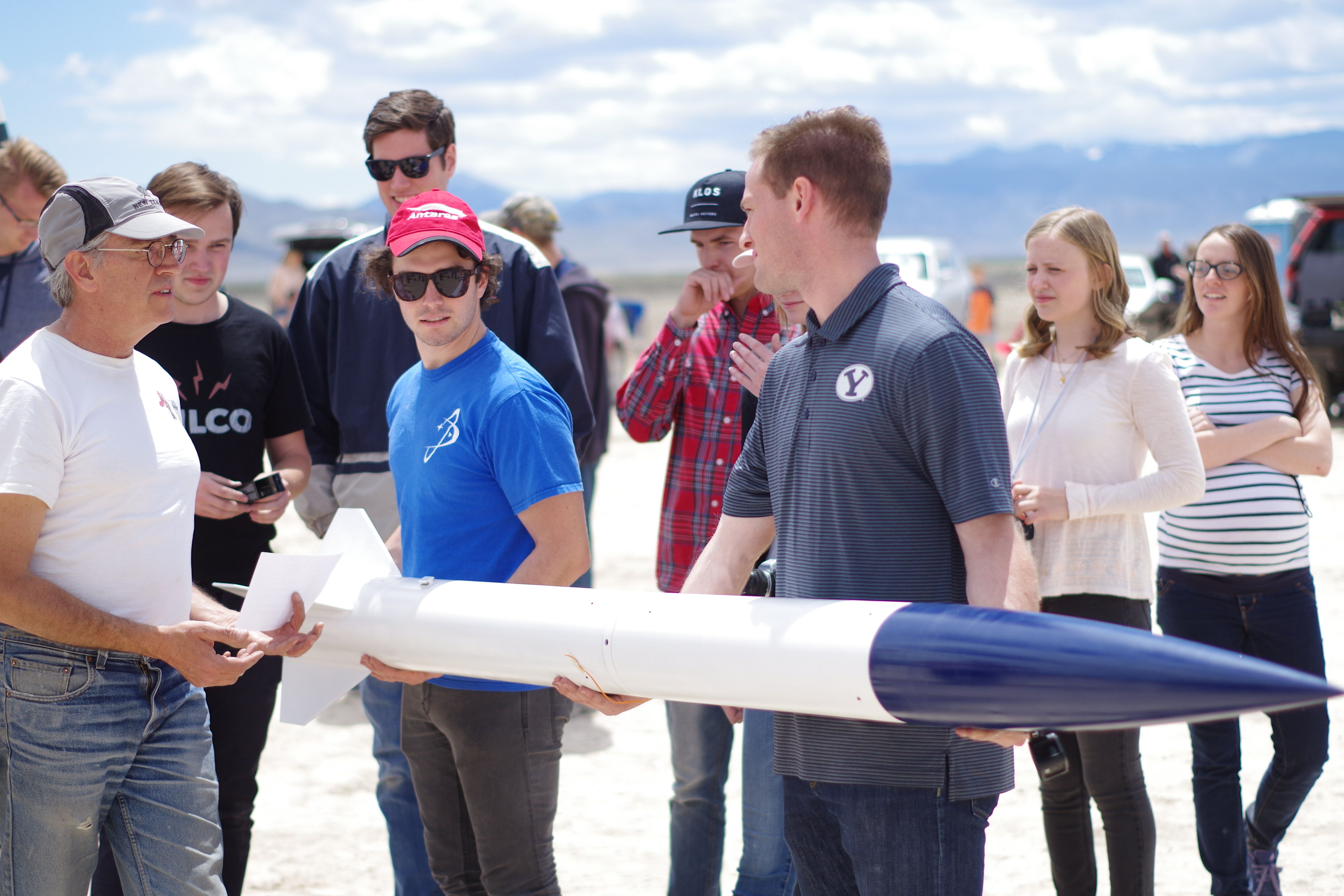
BYU Rocketry is gaining momentum this year with a test launch, a competition and new materials in their rockets.
The club presented at the Society for the Advancement of Material and Process Engineering Jan. 17. This marked the first time BYU students spoke about their recent work with composite materials for their rockets.
Carbon fiber is one composite material the rocketry club will use in some of its rockets.
“It is really light but really strong for how light it is,” said BYU Rocketry President Ryan Garrison. “We hope that with the use of composites we will be able to launch one of the rockets over 100,000 feet.”
Students involved in the high-power team built a 10-foot rocket last year for the Intercollegiate Rocket Engineering Competition. They named the rocket “Kevin” and launched it 10,000 feet.
Their experience with Kevin led the club to consider using new materials.
“We had an issue with the airframe cracking in half when the parachute came out, and because we’re kind of on a budget and don’t have a ton of money, we went with a sort of store-bought tube for the airframe,” Garrison said. “This year we want to use carbon fiber because we would have gotten second place last year, but we got 12th because our airframe broke.”
Garrison is confident the team will be able to improve its results this year in the competition with the use of carbon fiber.
BYU Rocketry students spend upwards of two semesters designing and building their rockets.
“We have a spectrum of rocketry activities that allow involvement at almost any level, from fun to serious,” said David Fullwood, the high-power team faculty adviser.
Fullwood said the students on the high-power team tend to be more serious and involved.
“To them, ignition is like birth, and launch is the ultimate art form, not just the result of a bunch of engineering equations,” Fullwood said. “I’m pretty sure they would spend their last $5 on an altimeter rather than a pizza.”
Each fall semester starts with an entry-level competition where new members learn how to build a rocket. At the end of the semester, they launch the rockets with the goal of reaching a certain altitude. The closest rocket wins.
Club members then work on getting their high-power rocketry certification during the winter semester.
High-power team lead Riley Meik said the team spent all of last semester designing the rockets and doing tests. In March, the team will do a test launch with the Utah Rocket Club on the other side of Utah Lake.
The high-power team also competes in the Intercollegiate Rocket Engineering Competition, which will be held June 19 to June 23, at Spaceport America.
The BYU team will join 123 other teams from universities all over the world this year, with the goal of launching the rocket to 10,000 feet.
“Not above it, not below it — exactly 10,000 feet,” Garrison said.
The team that gets its rocket closest to 10,000 feet will be declared the winner. Although the winners receive prize money, Meik said the real prize is networking with recruiters from leading space companies.
“We’ve actually had multiple students get internships and full-time offers from SpaceX, Orbital ATK, Northrop Grumman and Los Alamos National Labs,” Garrison said.
With the use of composite materials in the rockets this year, the group will participate in a demonstration flight during the competition.
“The competition selects six teams each year to do demonstration flights, so it’s pretty much like they pick the six best rockets,” Meik said. “They’re not in the competition; they’re just high-altitude demonstration flights.”
The other five teams include the winner of last year’s competition and schools like MIT. The competition will feature the “best of the best,” according to Meik.
“BYU Rocketry is becoming more than just kids playing around with cardboard tubes and rocket motors,” Meik said. “It’s engineering now, and BYU is starting to get a lot of recognition from companies that are usually looking at all the other universities for internships.”
For more information about the high-power team check out the BYU Rocketry website.




